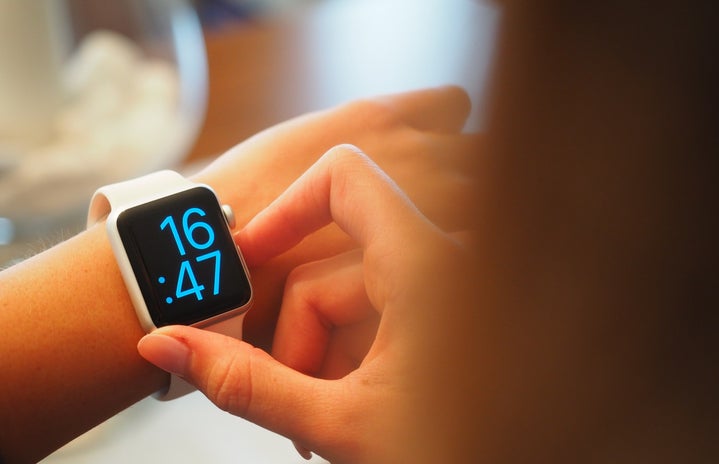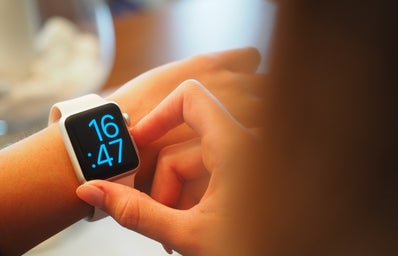I’ve been using my Apple Watch for three months now, and I have noticed some significant differences between the Apple Watch and Fitbit Charge 3 that I used previously. I wanted to highlight some of these differences in case anyone is trying to decide between the two!
Note: The Fitbit Versa model resembles an Apple Watch more than the Fitbit Charge 3, but I wanted to speak to my actual experiences. Additionally, you may be interested in reading about the end of my Fitbit journey in this article I wrote a year ago.
The Battery Life
This was one of the first things I noticed about my Apple Watch. Its battery lasts a day and a half, so it is much more like a phone than a watch. My Fitbit battery on the other hand would last four to five days. It’s really disappointing to feel like you’re always charging the watch, especially if you forget to charge it at night and have to charge it in the middle of the day, which means you miss out on activity tracking.
Exercise Monitoring
While both watches will monitor activity throughout the day and specific workouts when prompted, the watches differ. For me, I’m usually tracking activities like running or walking outside. When I tell my Apple Watch that I’m going for an outdoor run or bike ride, it will track my route even if I’m not carrying my phone. On the other hand, my Fitbit would only map out my run if I carried my phone too. Both devices have a feature for automatic pausing of workouts – this is handy if you’re stopped at a traffic light for instance – but they can be finicky. Sometimes I’d find myself 30 minutes into a run and realize that my Apple Watch paused my workout 11 seconds in.
Now, when the watch is monitoring my daily activity outside of workouts, the way that it displays this information differs. An Apple Watch uses three exercise rings: move (related to calories burned throughout the day), stand (standing/walking for one minute per hour) and exercise (number of minutes in the day where your heart rate is high and you appear to be exercising). Apple Watch users aim to fill all three rings each day. With the Fitbit, there is much more emphasis on the number of steps taken per day; this information is available for Apple Watch users if you know where to find it, but it’s not as dominant. Fitbit also tracks the total distance walked, the number of hours in which you got at least 250 steps and the number of hours of sleep. Personally, I think Apple developed the rings idea to try to differentiate from Fitbit and Garmin. I really like that with the Apple Watch I can just stand one minute each hour instead of walking on the spot for two minutes every hour.
Syncing
If you have owned a Fitbit, you likely understand the struggle of trying to connect your watch to your phone at the end of the day to sync your app to your phone. I used to spend 3-10 minutes every day trying to sync my watch to my phone. I have noticed that the delay in the transfer of data from my Apple Watch to my iPhone is non-existent, which is a plus for the Apple Watch.
Control of the Phone
The Apple Watch can do many simple tasks – like answering phone calls and replying to or sending text messages – while the Fitbit can just receive text messages or alert me of a phone call. I’m not sure if an Apple Watch can be connected to an Android phone, but I think these features would be exclusive to iPhone users. Both watches will display calendar reminders, which I find helpful when I’m on campus trying to remember which room to go to next.
Accuracy
Back in 2019, Laurier’s own Allana Blumberg did an Apple Watch vs. Fitbit comparison, and trust me, I tried to find the post for you to reference. I think it was posted to her Instagram stories. ANYWAY, she did an experiment where she wore her Apple Watch on one wrist and her Fitbit on the other during a regular day that included a workout. From what I recall, both trackers recorded similar results with differing calorie amounts and step counts.
Price
Apple Watch SE from the Apple Store: $369
Fitbit Charge 3 from Altitude Sports: $199
Additionally, both watches give me access to the free versions of their mobile fitness apps, but both offer a paid version as well. I personally haven’t used either the Fitness+ or premium Fitbit app.
Other Cool Features to Note
My Apple Watch is essentially an extension of my phone, except I can’t scroll Instagram and Twitter on its screen. I can pause and skip songs using my Apple Watch. Additionally, I can customize the Apple Watch face with my favourite pictures from my phone as often as I’d like. The Fitbit allowed me to have some control over the font and size of the clock in the watch face, but it’s not a colour screen, so there’s no pictures.
Both the Apple Watch and Fitbit will show the local weather; personally, I liked the display icons for the weather better on my Fitbit. Both the Apple Watch and Fitbit allow me to set alarms, timers and stopwatches; however, I prefer the Apple Watch for this because I can click the button and tell Siri how long of a timer I want instead of trying to find the timer and increase the time to my requirements.
At the end of the day, you should pick the activity-tracking watch that you think is best for you. There are other Apple Watch models and Fitbit models, in addition to Garmin watches and other brands. Consider how much you are willing to spend on this device, and what purpose you want it to serve. You don’t have to buy the most expensive watch on the market to be incentivized to incorporate movement into your everyday life.



